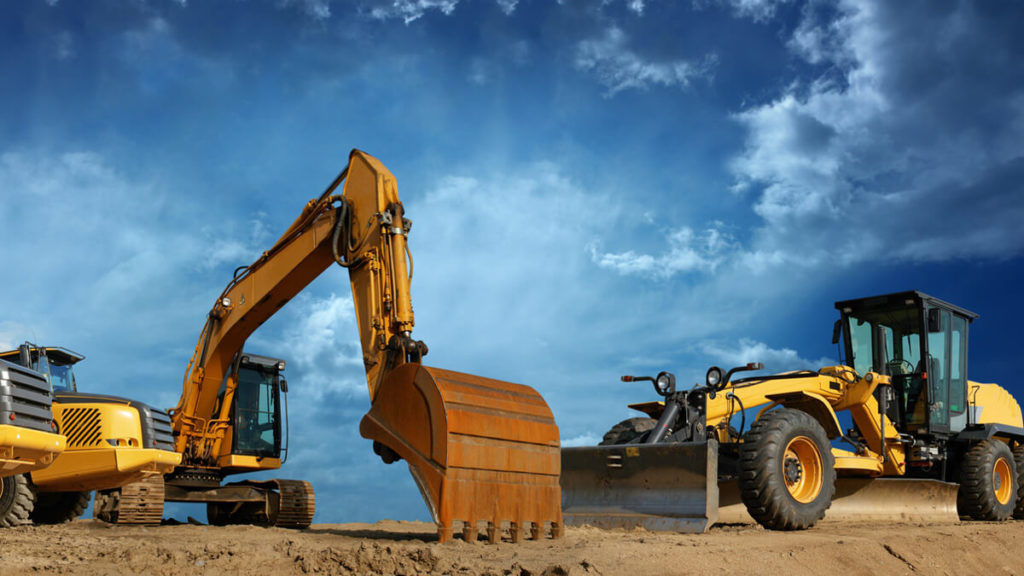Excavators are undoubtedly among the most essential heavy machine that is present at most construction project sites. This is simply due to the fact that machines such as excavators and lately even skid steers are utilised for an enormous variety of tasks that range from handling material, land ‘prepping & landscaping, demolition projects, mining, river dredging, trenching, excavating, grading digging and much more. The configuration of the excavator which consists of a boom or extended arm, a dipper, and a bucket are connected to a cab that rotates. Inside this cab is where the operator of the excavator controls everything and as most excavators are able to rotate 360 degrees, excavators are able to dig, or demolish structure and clear debris instantly. Excavators or skid steers for that matter are generally available in two formats, they are either mobile on tracks or wheels and the difference for use is generally dependent on the terrain (tracked skid steers or excavators are generally used on rough and uneven terrain whereas wheeled machines are more suitable for even terrain) and as well as the nature and requirements of a specific project.
Size Does Matter – Getting it Right
Excavators and skid steers are made available in a wide variety of sizes, weights and classes with the heaviest weighing about 90,000 KGs. The sizes and weight are usually parallel to engine power with the rule of the thumb being the bigger they are the more powerful the engine. Both, the excavator and the skid steer these days come with hydraulic couplers that allow these machines to be fitted with numerous other attachments that render these machines useful for more than just digging, moving earth and excavating. These attachments have significantly increased the diversity of the excavator or skid steer as just by swapping the bucket for example with an auger or drill, the excavator becomes a drilling machine and fit it with a ripper, the excavator or skid steer instantly turns into a demolition machine. However, despite the fact that both machines may be used for various tasks associated with construction usually, it is still important to choose the right type of excavator or skid steer in order to ensure that their utilisation is optimised.
The best approach towards selecting the right excavator or skid steer when taking them on rental for a specific project is to initially make a full assessment of what the machine is required to do/ perform and when. This is because what the machine is required to do involves choosing the right attachments (which are usually charged separately) and when they are required is all about being cost effective as it would be unwise to have the machine idling about at the project site not doing anything when it is actually incurring cost. Then comes the size of the excavator or skid steer based on the type of project at hand, the smaller the machine the cheaper it is, however, this is dependent on the kind of power that is needed to perform the project tasks. Getting all these factors correct will ensure that the project is managed cost effectively and efficient. For example if the excavator or skid steer is going to be needed for more than 50 hours for example, it might be more feasible to just buy the excavator and rent the attachment. However, if the excavator or skid steer is only going to be utilised for about 5 hours for the entire project duration, then it is most definitely advisable to take these excavators for rental. The devil is always in the little details.


